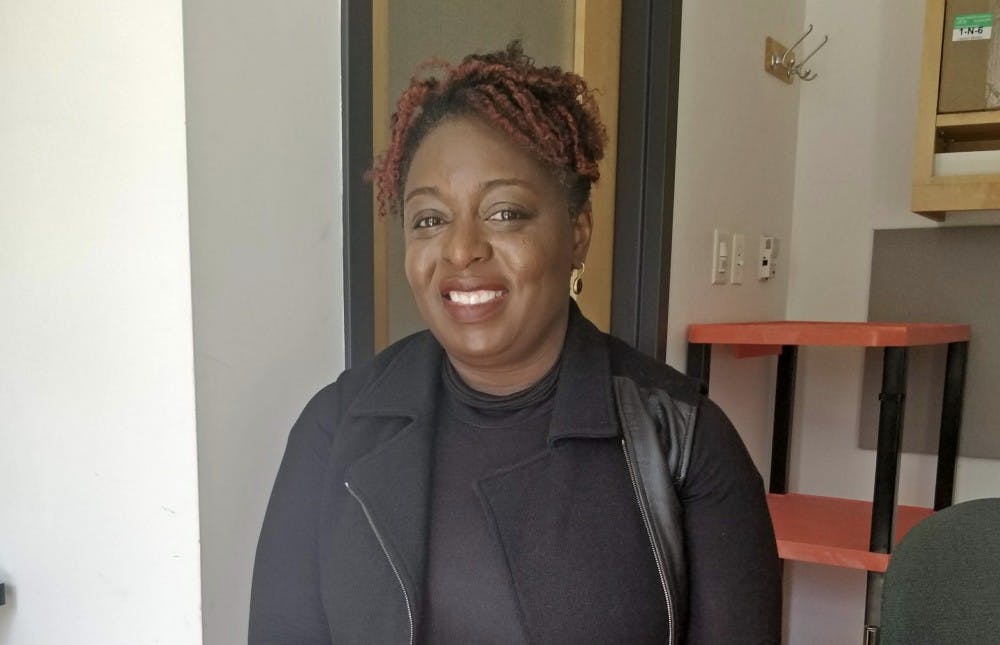Kimberly Bryant, founder of Black Girls Code (BGC) and one of Business Insider’s “25 Most Influential African-Americans In Technology” has been working with young female coders, aged between 7–17 years, through her pioneering nonprofit since 2011. Aimed at combating the lack of opportunities and exposure that African-American girls face in STEM fields, BGC differentiates itself from other organizations with its model of working with students throughout the school year instead of organizing a typical summer camp. This model helps BGC provide sustained support and guidance to their students.
During Bryant’s recent visit to the University, The Daily Princetonian had the opportunity to speak with her about her journey of educating over 8,000 female technologists with BCG and her dream to reach one million young girls by 2040.
The Daily Princetonian: You started BGC in 2011, and you’re very close to celebrating your 10th anniversary. What were your biggest challenges so far, and how did you overcome them?
Kimberly Bryant: Our biggest challenges have always been related to growth and scale. Since day one, we have consistently had more demand than we can even begin to provide. We started out as a grassroots organization with nothing more than my savings account funding the program. Building sustainable growth has been an uphill battle for us. Even today, we get requests to start new chapters of BGC every day.
This demand has always outpaced our ability to meet it. We don’t have the resources to be in all these places, and it’s been a consistent challenge for us. I always tell people that it’s a good problem to have, but it’s also somewhat frustrating. I realize that there’s so much need that we would love to be able to fill, but we just don’t have the capacity to provide all the things that people ask us to provide. For me, as a founder, it’s about understanding that while there are limitations to what we can do as an organization, we can try to get as far down that line – in terms of providing resources and support – as possible.
DP: You’ve been a woman in STEM for several decades now. What changes have you noticed in the field and what specific changes would you like to see?
KB: Unfortunately, even today, I see a lot of the same things as I did when I was younger. When I have this conversation with women in my generation, women a little bit older than my generation, and even women that are more contemporary, we all have similar stories, sometimes horror stories, and our pathways are so similar. Unfortunately, a lot of the structural issues that I faced in my career, and that a lot of women older than me faced in the same career, are still there. I think what may be changing is our capacity and our belief in our abilities.
When the movie “Hidden Figures” came out, I remember going to see it with my daughter. When we were watching the movie, I remember thinking that the movie wouldn’t resonate with my daughter. I didn’t think the movie would connect with her because it’s about women who were in a similar field in the 1950s. But the movie did connect with her. It certainly connected with me, even though the women in the movie were trailblazers for me. I was surprised at how deeply the movie impacted my daughter and the other girls we took to watch the movie. I didn’t think they would get it, but they did.
However, I think watching this movie made an important change because it showed my daughter and the other girls that even though they may only see themselves in their computer science classes, there were women like Katherine Johnson in the field before them. This movie showed them that women have been involved in technological innovations all along. Because we were hidden, women in general, from the dominant narrative about computer science and innovation, it made it seem like this career was not something women could do. In that sense, watching this movie helped shift the narrative about women in STEM.
DP: If you had to narrate your journey using three turning points, which ones would you choose and why?
KB: Without a doubt, the first turning point in my journey would be deciding to major in electrical engineering instead of civil engineering. I went to college with the expectation of studying industrial engineering because I saw it as more people-oriented. But the college I decided to go to, Vanderbilt University, didn’t offer an industrial engineering program, and I chose to study what I thought was the next-most human-centered study in engineering, civil engineering, instead. In the first year, I decided it was not for me. I chose to study electrical engineering and, to be honest, I’m not really sure why. The digital industry was growing in 1985 and there was a lot of focus on solid-state technology because of Intel. I think it was a pivotal moment for me because it really opened up the opportunities to do a lot of the work that I’m doing now.
The second turning point in my journey was in 1999, when I gave birth to my daughter. I felt a really strong connection to her success. This was long before she decided to become an engineer. Motherhood really created this intense sense of protection. I wanted to create a better world for my daughter and provide a strong support system for her. I was really adamant that she didn’t see any limitations on what she could do. I wanted her to find a certain freedom in being able to pursue her dreams. So becoming a mother allowed me to grow into this idea of creating opportunities for my daughter.

Then, the third turning point was in 2010, when I realized that she wanted to become an engineer. Here, again, she made such a critical impact on my life journey and the work that I’m doing now with girls in computer science. I would not be doing this if not for her.
DP: What does the path forward look like for BGC?
KB: We’ve reached about 9,000 students to date and we hope to double that number in the next five years. This year, we’re also really focusing on tapping into the strong community of alumni students who are entrepreneurs and decision-makers in the companies they work for today. I see this as a tremendous opportunity to involve the next generation of women leaders in tech, who also have a background with Black Girls Code and who bring a certain value perspective to the companies they work for, which wouldn’t exist otherwise. I think these young women will be able to shift the discussion, and also the resources, at these companies.
DP: What tips do you have for young female engineers for overcoming barriers imposed by institutional sexism?
KB: I’ll say what I always tell my daughter: we have to learn to ask for help. I think we, as women, put so much pressure on ourselves to be perfect and do things on our own instead of asking for help. But that’s not realistic, especially in a field like engineering, which is so hard. Engineering is difficult. It is meant to be difficult. But if we don’t ask for help, we may not get it. If we’re in male-dominated classrooms, with male professors, we may get left behind if don’t go and ask for the help we need.
I also think that we should give ourselves a little bit of room for failure. We take failure personally, even though it’s part of the learning process. Giving ourselves the permission of not taking failure as a personal indication of our value or our abilities is so important.
Lastly, I think we, as women, tend to do our best when we can work in collaboration with others. It’s our superpower. I also think it’s the key to survival in this male-dominated industry. Until there’s a shift and the industry becomes more female-friendly, I think women should latch onto that aspect of collaboration as a strength and use it to our advantage.
DP: Is there any advice you’d like to end with?
KB: I always like to end with this: I think the work that organizations, like BGC and others like Girls Who Code, are doing is important because if we can ensure that there is access and equity for the most marginalized communities, we can help give them a voice and a space in the technology industry. It really creates opportunities and elevates the playing field for everyone. I think, sometimes, diversity and inclusion efforts are looked at with a negative lens, and there is the belief that it might take away from the dominant narrative. I don’t think that’s true. By making sure that everyone has the opportunity to contribute, we can make a more inclusive culture for everyone that sits in the space. This is an important point that is often missed or not spoken about as often.








